15 - 16 MARCH 1998 - 15/21.00 - 16/00.00 UTC - FRONTAL DIAGNOSIS - USE OF VERTICAL CROSS SECTIONS
by ZAMG
16 March 1998/00.00 UTC - Meteosat IR image; position of vertical cross section indicated
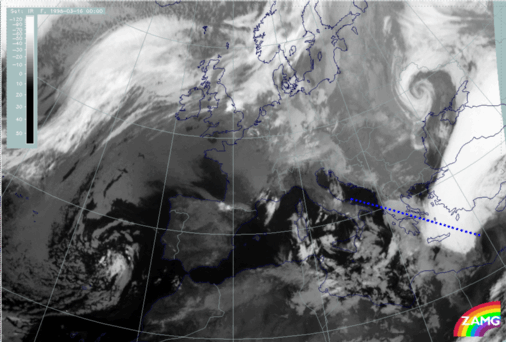
by ZAMG

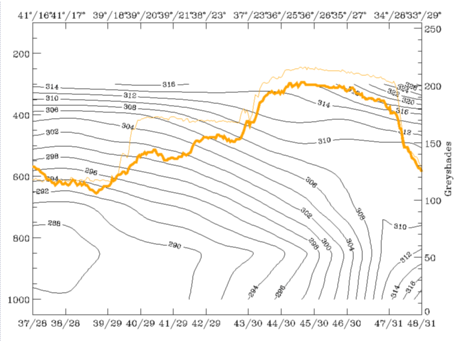
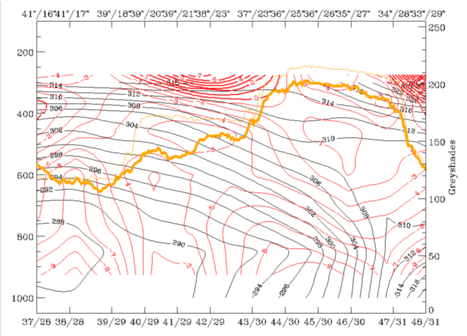
|
16 March 1998/00.00 UTC - Vertical cross section; black: isentropes (ThetaE), magenta thin: divergence, magenta thick: convergence, orange thin:
IR pixel values, orange thick: WV pixel values
|
16 March 1998/00.00 UTC - Vertical cross section; black: isentropes (ThetaE), cyan thick: vertical motion (omega) - upward motion, cyan thin:
vertical motion (omega) - downward motion, orange thin: IR pixel values, orange thick: WV pixel values
|
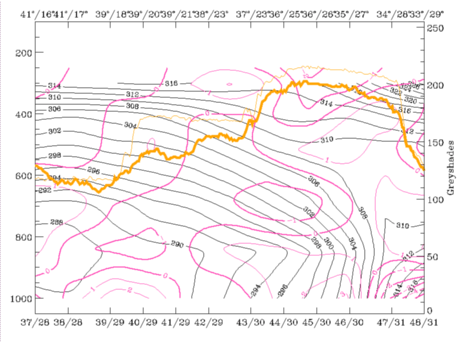
|
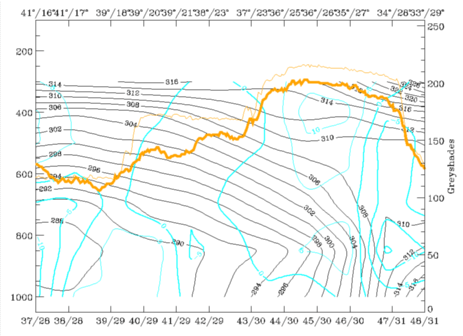
|